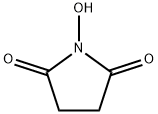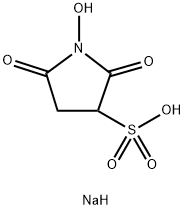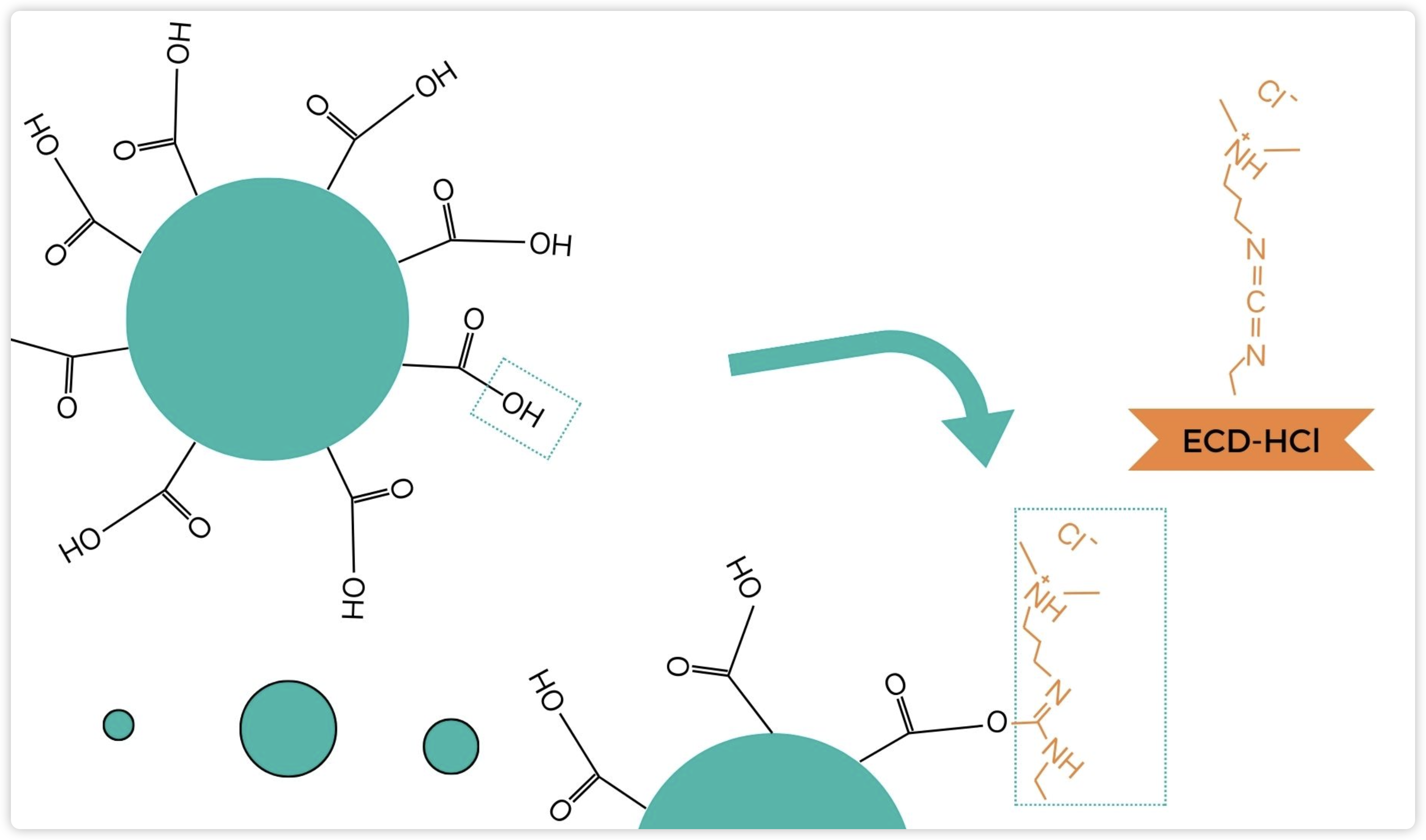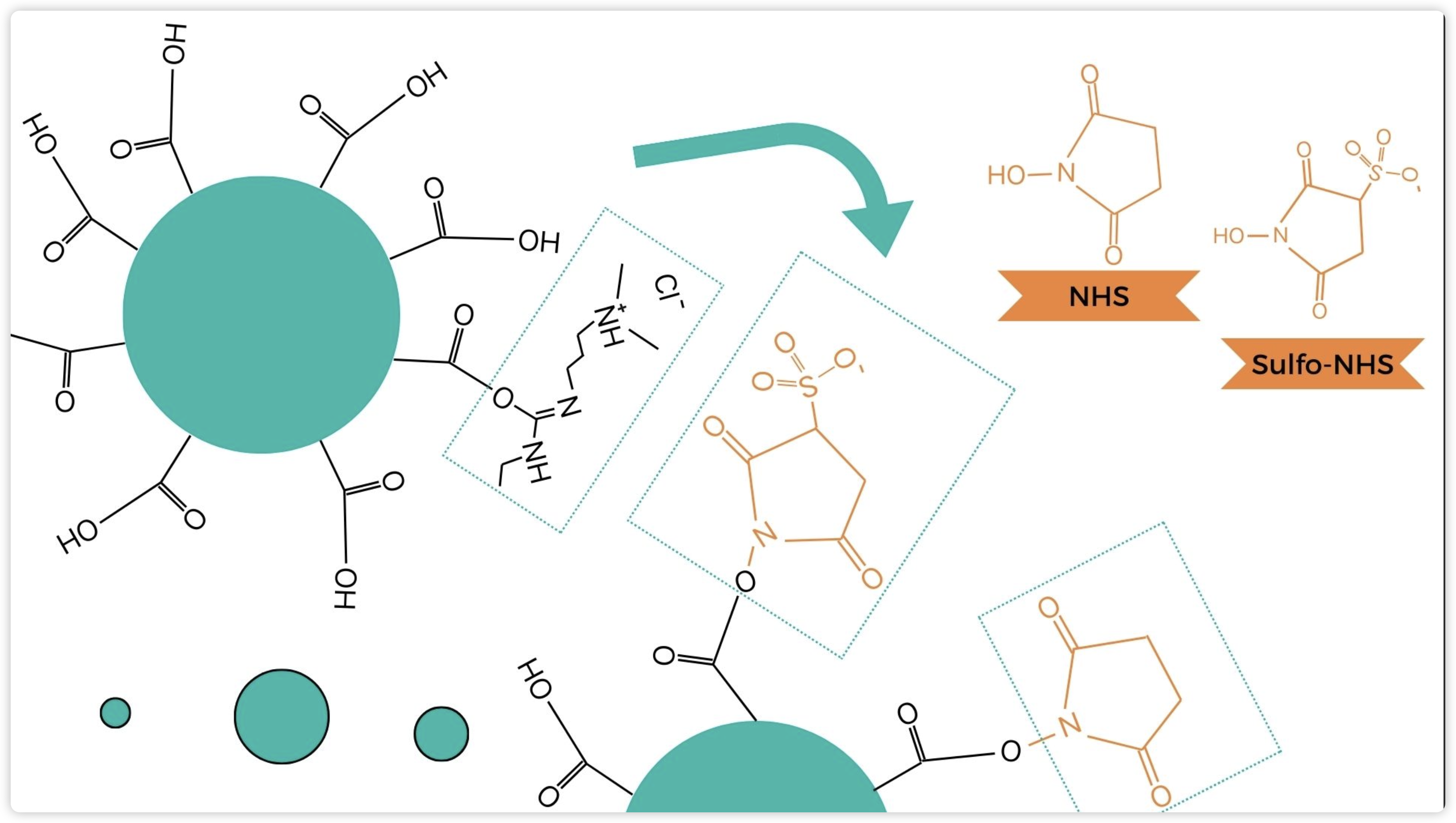News & Blogs 2024-08-13
NHS and Sulfo-NHS and Their Impact on Reagent Performance

EN
CN
EN
News & Blogs 2024-08-13
NHS and Sulfo-NHS and Their Impact on Reagent Performance
Magnetic microsphere activators are chemical reagents used to introduce active groups on the surface of magnetic beads, enhancing the binding efficiency between the beads and target molecules (such as antibodies, antigens, proteins, etc.). The main functions of activators include:
NHS (N-Hydroxysuccinimide) and Sulfo-NHS (N-Hydroxysulfosuccinimide) are two common activators used to convert carboxyl (COOH) groups into more reactive ester groups for cross-linking reactions with amino (NH2) groups. Their main differences are as follows:
Item | Molecular Weight | CAS # | Structural formula |
NHS (N-HYDROXYSUCCINIMIDE) | 115.09 | 6066-82-6 |  |
Sulfo-NHS (N-HYDROXYSULFOSUCCINIMIDE) | 217.13 | 106627-54-7 |  |
source:
https://www.chemicalbook.com/CAS_6066-82-6.htm
https://www.chemicalbook.com/CAS_106627-54-7.htm
NHS is well-known in the in vitro diagnostic field, forming a "golden duo" with EDC in the microsphere activation process, highly praised by many researchers. Its main features include:
● NHS is insoluble in water, usually used dissolved in organic solvents (such as DMF or DMSO), and possesses membrane permeability.
Sulfo-NHS, derived from NHS, functions similarly with additional benefits:
● Sulfo-NHS dissolves poorly in organic solvents and lacks membrane permeability, but it is highly water-soluble and can be used directly in water or buffer solutions.


Despite both being activators, NHS and Sulfo-NHS show differences in practical microsphere activation processes. For example, carboxyl microspheres, which inherently have good hydrophilicity due to numerous carboxyl functional groups on their surface, show reduced water solubility after NHS modification, whereas Sulfo-NHS-modified microspheres maintain or even improve their original water solubility due to the hydrophilicity of the sulfonate group.
The structural and functional differences between NHS and Sulfo-NHS lead to different coupling results. In an experiment with an inflammation-related project on a fluorescence immunochromatography platform, microspheres were coupled with NHS and Sulfo-NHS under the same conditions using EDC. The results showed varying linearity and sensitivity:
These phenomena may vary depending on the project, as activators fundamentally affect the amount of protein coupled to the microsphere surface, leading to differences in linear performance.